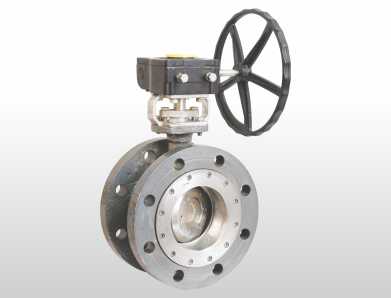If you’re in the market for a new valve, you may wonder if a butterfly valve suits your needs. In this blog post, we’ll closely examine how butterfly valves work, as well as their advantages and disadvantages. By the end, you’ll better understand whether a butterfly valve is suitable for your next project.
Introduction
A gear-operated butterfly valve is a quarter-turn valve that uses a disc and seat arrangement to control the flow of liquids and gasses. The disc is attached to a shaft that is connected to a gearbox. The gearbox allows the user to rotate the disc and open or close the valve without removing the entire valve from the piping system.
Gear operated butterfly valves are used in various industries, including oil and gas, chemical processing, power generation, and water treatment. They are available in a wide range of sizes and materials, making them suitable for many applications.
The Gear operated butterfly valve has several advantages over other types of valves. They are easy to operate and maintain and have a compact design, making them ideal for use in space-restricted areas. They are also less likely to leak than other types of valves, which makes them suitable for use in critical applications.
What is a butterfly valve?
A butterfly valve is a type of quarter-turn valve consisting of a disc mounted on a shaft. The disc is positioned in the pipe’s center and connected to the post. The shaft is rotated to open or close the valve. Butterfly valves are used in various applications, such as controlling water flow in irrigation systems, regulating the flow of oil and gas, and as emergency shut-off valves in oil refineries.
How does a butterfly valve work?
When the shaft is rotated, the disc is also rotated. The disc then opens or closes the valve, depending on the direction of the rotation. The amount of flow allowed through the valve can be controlled by adjusting the position of the disc. Butterfly valves are classified as either low-pressure or high-pressure based on the pressure rating of the valve. Low-pressure butterfly valves have a pressure rating of 150 psi or less, while high-pressure butterfly valves have a pressure rating of 300 psi or more.
Why choose a butterfly valve?
One might choose a butterfly valve over other valves for many reasons. Butterfly valves offer several advantages, such as being able to be used in high-pressure applications, less likely to leak, and easier to maintain.
Butterfly valves are also well-suited for use in applications where space is limited, as they are smaller than other valves. In addition, butterfly valves can be installed in horizontal or vertical pipelines.
Types of butterfly valves
There are two main types of butterfly valves: those with a wafer disc and those with a lugged disc. Wafer butterfly valves have a disc attached to the shaft with two bolts. Lugged butterfly valves have a disc attached to the post with lugs. Both types of valves are available in either low-pressure or high-pressure models.
Wafer butterfly valves are the most common type of valve used in industrial applications. They are less expensive than lugged butterfly valves and are easier to maintain. Lugged butterfly valves are often used in high-pressure applications, as they provide a more robust seal.
The material of the disc can also classify butterfly valves: The most common materials used for discs are metal, plastic, and rubber. Metal discs are typically used in high-pressure applications, as they can withstand higher pressures than plastic or rubber discs. Plastic discs are often used in low-pressure applications, as they are less expensive than metal discs and can be molded into different shapes. Rubber discs are typically used in food and beverage applications, as they provide a good seal and can resist corrosion.
Advantages and disadvantages of butterfly valves
Advantages of butterfly valves:
Butterfly valves have several advantages over other types of valves. They are small and compact, making them ideal for space-restricted applications. They can be installed in both horizontal and vertical pipelines. Butterfly valves are also classified as either low-pressure or high-pressure based on the pressure rating of the valve. This makes them suitable for a wide range of applications. Butterfly valves are also relatively easy to maintain.
Disadvantages of butterfly valves:
However, butterfly valves also have some disadvantages. One disadvantage is that they are less durable than other valves. Another disadvantage is that they are not suitable for very high-pressure applications.

